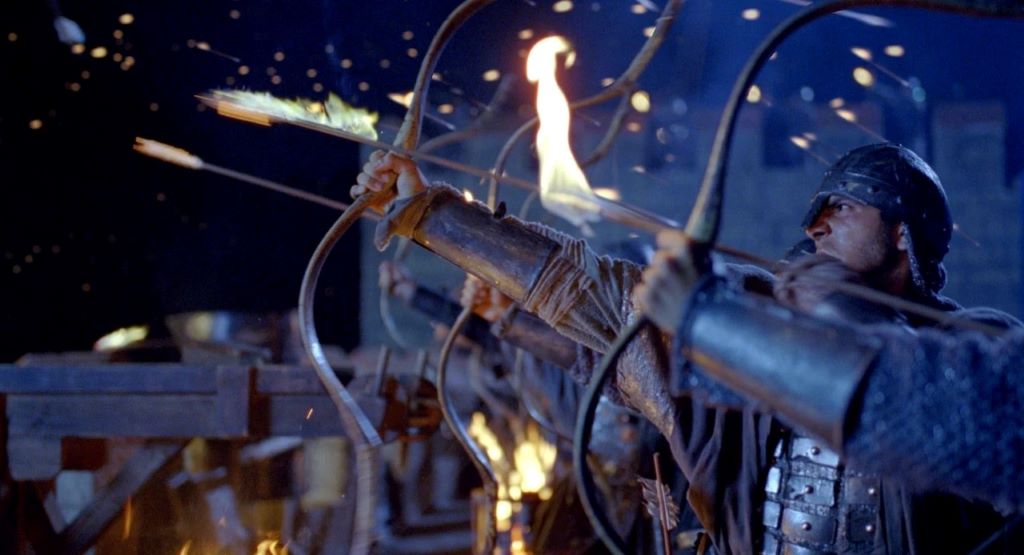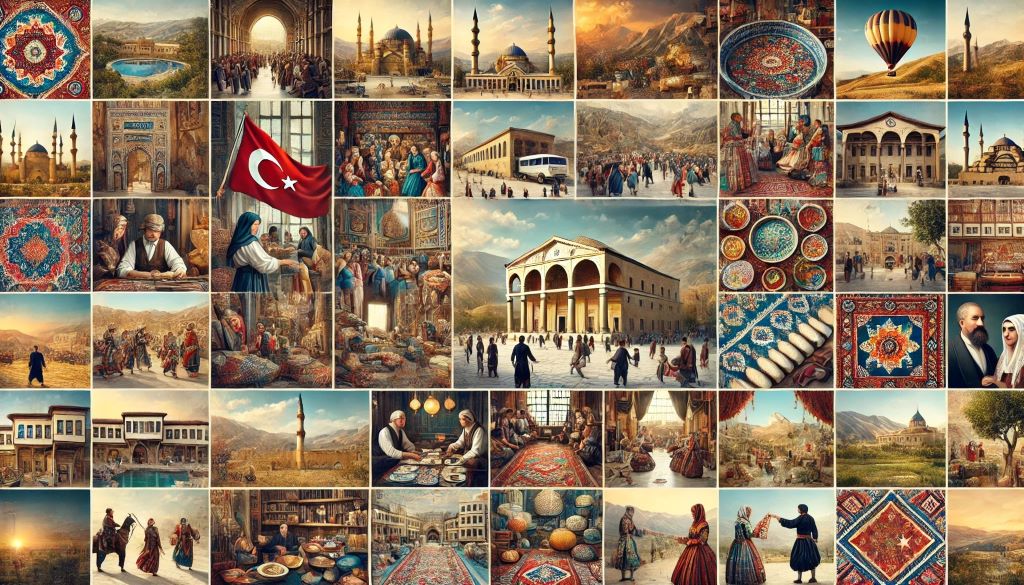
The cinematic portrayal of historical themes often gives us a glimpse into the past, and one of the most intriguing themes explored in films is that of the Ottoman Empire. From grand historical epics to nuanced dramas, Ottoman themes have deeply influenced film culture, both in the West and the East. Exploring Ottoman themes in film allows us to engage with the vast legacy of the Ottoman Empire, reflecting on its history, culture, and influence on modern society. So, as we dive into this fascinating world, make sure to explore Real Movie News for more cinematic updates on films that bring Ottoman history to life.
Throughout history, the Ottoman Empire reigned over vast swathes of land, from the heart of Europe to North Africa and the Middle East, for over 600 years. The empire’s rich cultural heritage, politics, military conquests, and intricate social structures have made it a captivating subject for filmmakers. However, the way Ottoman themes have been portrayed varies significantly across different regions and periods. This article delves into the ways filmmakers have captured these themes in modern cinema, looking at both historical films and contemporary interpretations.
-
The Ottoman Empire in Historical Epics
Ottoman themes often come to life in films that aim to retell pivotal moments of the empire’s history. Many filmmakers have crafted historical epics that bring to the forefront iconic figures such as Sultan Mehmed II, the conqueror of Constantinople, or Suleiman the Magnificent, one of the empire’s greatest rulers. These movies not only depict significant military victories but also capture the grandeur of the Ottoman court, its politics, and its cultural contributions to the world.
For example, in films like The Conquest of Constantinople (2012), the battle for the Byzantine capital is recreated in painstaking detail. Directors utilize intricate set designs and costumes to transport viewers into the heart of the empire, offering a look at its military prowess and strategic genius. Meanwhile, Magnificent Century (2011) tells the story of Sultan Suleiman, portraying both his personal and political struggles and his impact on the empire’s expansion.
Such historical epics often rely on a heavy dose of spectacle, using large-scale battle scenes, period-accurate costumes, and breathtaking sets to immerse audiences in the Ottoman era. However, these films also shed light on the more subtle, yet important, aspects of Ottoman life, including the empire’s sophisticated systems of governance, law, and culture.
-
Ottoman Influence in Modern Cinema
While historical epics often dominate the portrayal of Ottoman themes, modern films have started exploring these themes through different lenses. Films set in contemporary Turkey or the Balkans frequently reference the Ottoman legacy in various forms, from the remnants of the Ottoman Empire to the lasting cultural influences felt today.
For example, Mustang (2015), a Turkish film by Deniz Gamze Ergüven, subtly reflects the tension between modernity and tradition, a theme deeply rooted in the Ottoman heritage. The film follows five sisters in a small Turkish village, where they struggle to break free from traditional values that have persisted from the Ottoman era, highlighting the ongoing influence of Ottoman cultural and familial structures.
Even in movies in Turkey, one sees the lingering presence of Ottoman traditions. Directors often play with the juxtaposition of ancient and contemporary, as seen in the Neredesin Firuze? (2003), which features characters grappling with their own identity amidst the Ottoman legacy. This ongoing examination of the Ottoman Empire reflects how Turkish filmmakers engage with their history, offering both a reverence for the past and an exploration of its complex impacts.
-
Ottoman Themes in International Cinema

While Turkish filmmakers have certainly led the way in exploring Ottoman themes, international cinema has also embraced the empire’s fascinating story. Films like The Water Diviner (2014), directed by Russell Crowe, subtly weave Ottoman history into their narratives, particularly when addressing the post-World War I consequences on the Middle East. Crowe’s film, set in the aftermath of the Ottoman Empire’s collapse, shows how the empire’s legacy haunted the region, leaving long-lasting scars on its people.
Western films often approach Ottoman themes with a sense of exoticism and romanticism. Midnight in the Garden of Good and Evil (1997) indirectly draws from Ottoman influences through its depiction of elaborate rituals and the blending of cultures. This approach highlights the Ottoman Empire’s cosmopolitan nature and how it integrated diverse cultures, faiths, and traditions.
Interestingly, while Western films may focus more on the grandeur of the empire, the portrayal of Ottoman culture in Turkish cinema is more intimate, examining daily life, class dynamics, and personal relationships. This contrast offers a unique perspective, shedding light on how the same historical empire can be depicted differently depending on the lens through which it is viewed.
-
The Aesthetic and Cinematic Influence of Ottoman Art
One of the most striking features of Ottoman-themed films is the visual aesthetic drawn from the empire’s art and architecture. Ottoman art, with its intricate patterns, vibrant colors, and attention to detail, has influenced film set designs, costumes, and cinematography in remarkable ways. The iconic blue tiles of the Blue Mosque, the grandeur of Topkapi Palace, and the opulence of Ottoman court life have all found their way into cinema, creating an atmospheric setting that transports viewers to the imperial world.
Filmmakers use these visual elements to heighten the historical atmosphere of their films, contributing to the overall immersive experience. Whether through lavish palace interiors or the design of military uniforms, Ottoman art influences how stories are told visually. This is especially apparent in films like Kösem Sultan (2015), a Turkish TV series based on the life of one of the most powerful women in Ottoman history. Here, the use of opulent costumes and meticulous set designs helps bring the empire’s splendor and complexity to life.
-
Cultural Dialogues and Criticisms: Ottoman Influence in Global Films
Ottoman themes also spark critical discussions on empire, colonialism, and cultural exchange. Filmmakers often use the Ottoman Empire as a backdrop for larger societal questions, engaging with themes of identity, power, and legacy. Films such as The Promise (2016), which explores the Armenian genocide during the final years of the Ottoman Empire, tackle controversial issues surrounding the empire’s history. These films confront the complex and at times painful legacy of the Ottomans, while also providing a platform for discussing cultural tensions and reconciliation.
The portrayal of Ottoman themes in cinema is not always entirely flattering; many films critique the imperial nature of the empire or focus on the more contentious aspects of its rule, such as the treatment of minority groups or the suppression of dissident voices. These critiques are important for understanding the full scope of the Ottoman Empire’s impact on its territories and beyond.
Summary
Ottoman themes have long been a staple in the world of cinema, from grand historical epics to nuanced modern narratives. Filmmakers across the globe continue to explore the empire’s lasting legacy, showcasing its cultural, social, and political influences. Whether through epic battles or intimate personal stories, Ottoman cinema captures the essence of a time and place that shaped much of the modern world. As filmmakers continue to delve deeper into Ottoman themes, the films serve not only as entertainment but as a means to reflect on history, identity, and the impact of empires on today’s global landscape.
Read More:
From Silver Screen to Smartphone: The Evolution of Entertainment
How to Hide Followers on Instagram?
